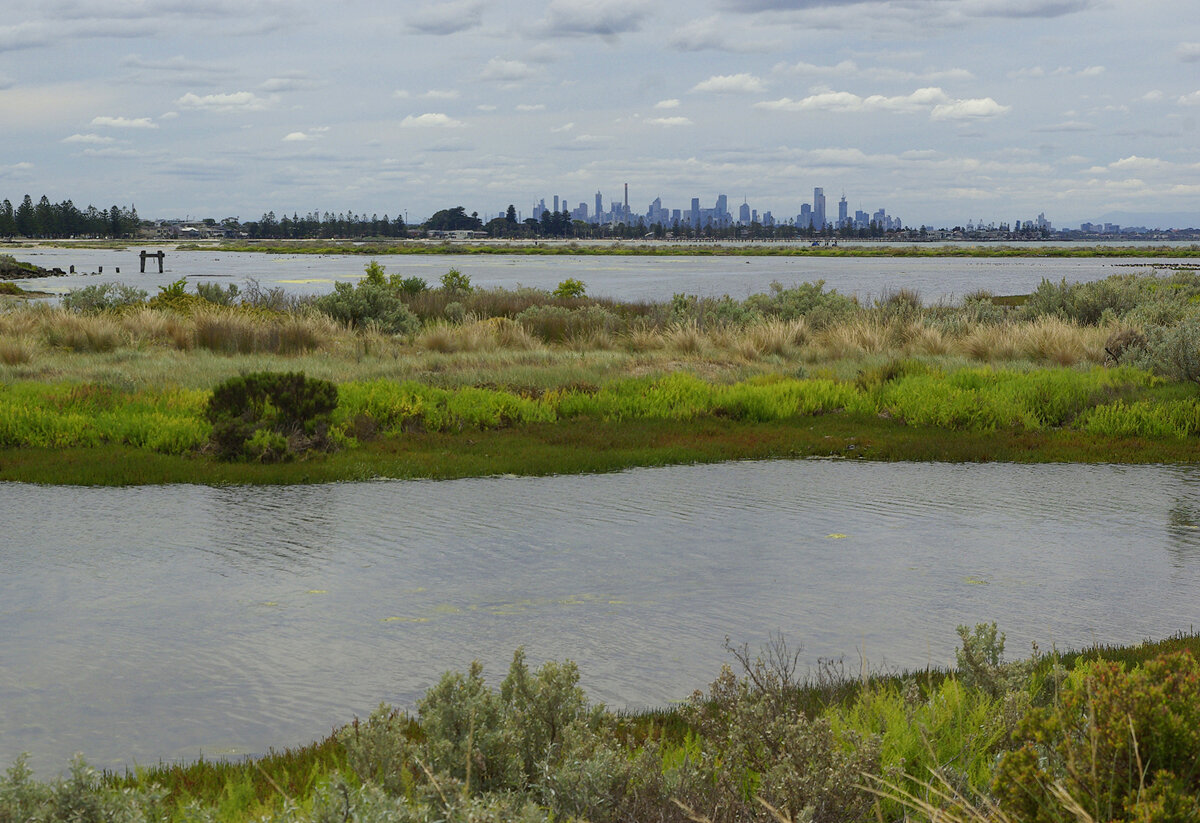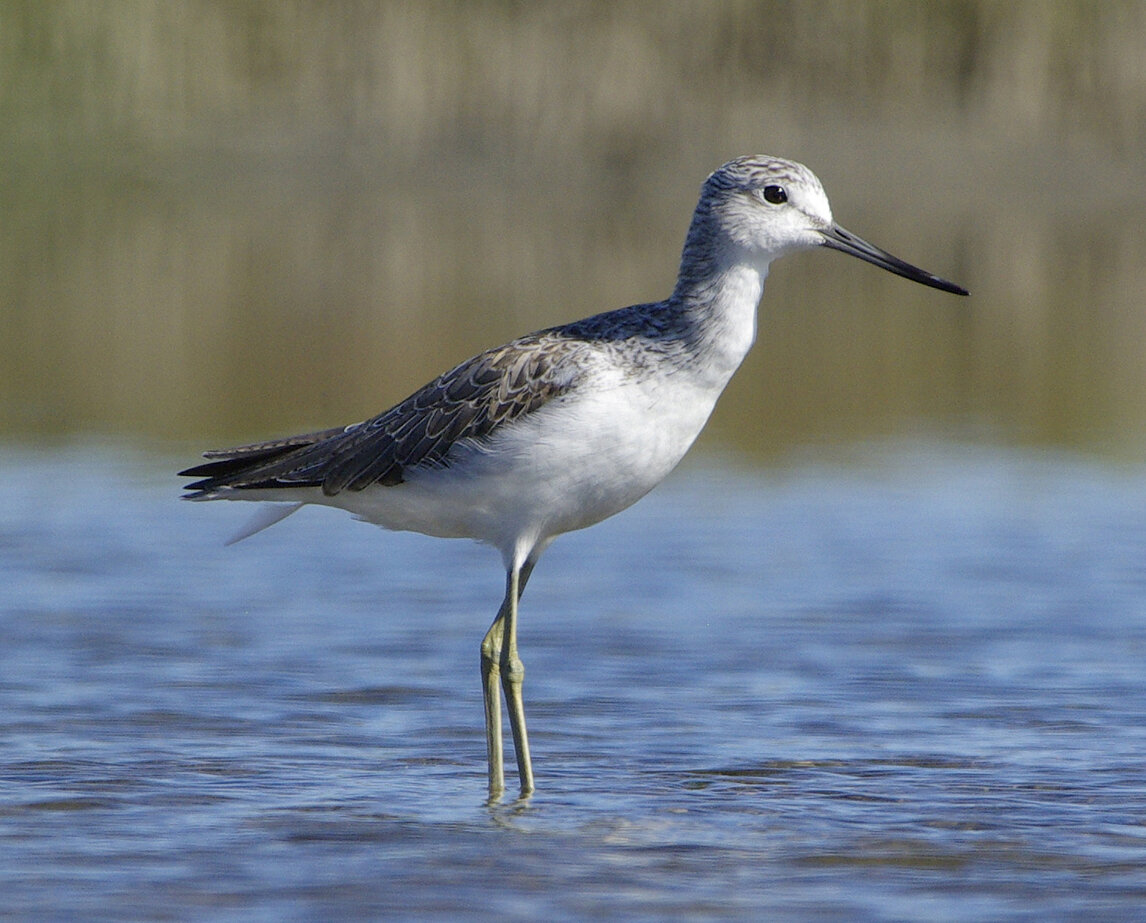Virtual tour of our wetlands
Unless you live close to H D Graham Reserve, you are unlikely to have explored our wetlands since lockdown began. So, what have you missed? And what might you find today if you went on an outing to the mouth of Laverton Creek?
Summer is the busiest time at the wetlands. Not only do the shorebirds arrive and feast on worms and crustaceans for several months, there can be days when hundreds of avocets and pied stilts decorate the sky.
Walk there today from Doug Grant Reserve and you will notice a quieter scene. Except for the jittery presence of swallows and cabbage white butterflies, there is a calm and stillness to the place. The sandbar close to Doug Grant is no longer a bustling sanctuary. During the summer months, it is home to whiskered terns and sharp-tailed sandpipers, stilts, avocets and teal. But today, it is quiet. A few lapwings prance around, emitting their high-pitched call. A white-faced heron stalks the water, and a little egret, it’s beak now as black as its legs, does its best to look effortlessly serene.
Little egret on the hunt.
The forest of southern mahogany (Eucalyptus botryoides) is quieter than usual. There are no downslurred whistles of the Horsfield bronze-cuckoo. Nor is there the clipping sound of pardalotes extracting lerp from the gum leaves. The main noise you hear is the excited chirruping of fairy wrens as they flit between clumps of seaberry saltbush (Rhagodia candolleana). The bright, buttery flowers of the soursob (Oxalis pes-caprae) sprout from the ground, attracting cabbage white butterflies which feed on the nectar.
Walk towards the 100 Steps car park and you might hear the restless calls of New Holland and singing honeyeaters, scrubwrens and grey fantails. Curlicued seed pods hang from the lightwoods (Acacia implexa). The male flowers of drooping she-oaks (Allocasuarina verticillata) dangle from the branchlets like orange-yellow tassels. It’s late in the season but a yellow box (Eucalyptus melliodora) may still be in flower.
One of the worst weeds in the area is the African boxthorn (Lycium ferocissimum), providing cover for predators such as foxes and rabbits. Days are spent by Council's conservation team removing this weed, but its removal heralds another problem as the boxthorn provides protection for fairywrens. Sometimes, the dead boxthorn is left to stand, and clematis is planted around it, the vines of the Australian climber hanging from the boxthorn's branches. Other times, the boxthorn is replaced with hedge wattle (Acacia paradoxa).
The saltmarsh is full of colour. Most striking is the warm, vivid red of the beaded glasswort (Sarcocornia quinqueflora). The austral seablite (Sueda australis) is also changing, the lush green becoming a pinkish red in readiness for autumn. There are few plants in bloom at this time of year, but if you are lucky, you may notice the occasional flower on the southern sea-heath (Frankenia pauciflora). The little grassbirds and fieldwrens are silent but they are there, hiding in the samphire (Tecticornia arbuscular, T. halcenemoides).
Austral seablite
Common greenshank
As you walk towards the sandbar again, a group of around fifty pied stilts fly overhead, yapping and gibbering. Their call, when amplified in this way, sounds like the noise of bickering puppies. They settle on the sandbar with the lapwings and grey teal. But look closer… in amongst them, you will see five birds foraging in the mud. They are greenshanks, still here long after the majority of shorebirds have left for their breeding grounds further north. Any day now they may take flight and begin their epic journey to the Arctic, or perhaps they will stay here for the winter.
Come back in a few weeks and who knows what may have changed. The swift parrots which took up residence in June last year may be back. Or are we due for another surprise? A powerful owl maybe? Or an orange-bellied parrot which has flown over from Werribee?
This part of inner Melbourne is always full of surprises. Hopefully, as restrictions ease, it won’t be too long before you can enjoy it again.
by Dave Witty (with input from Gordon Lescinsky and Andrew Webster)




